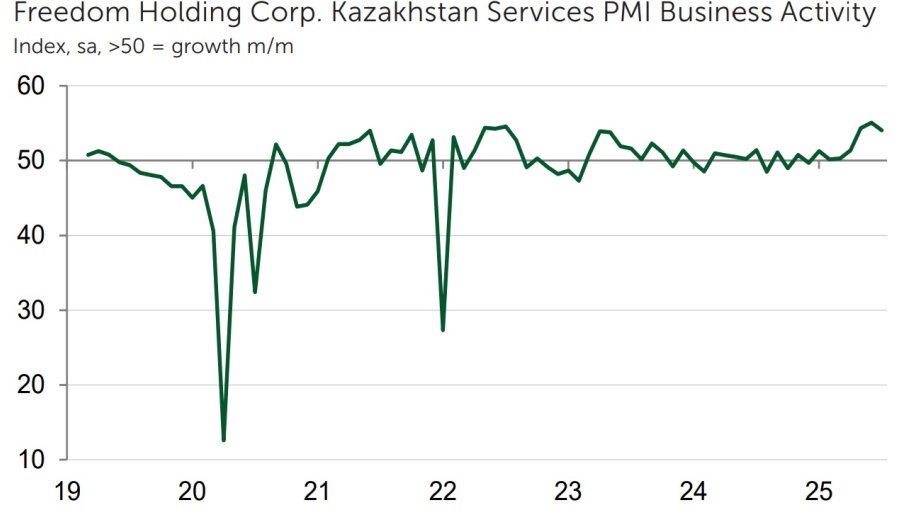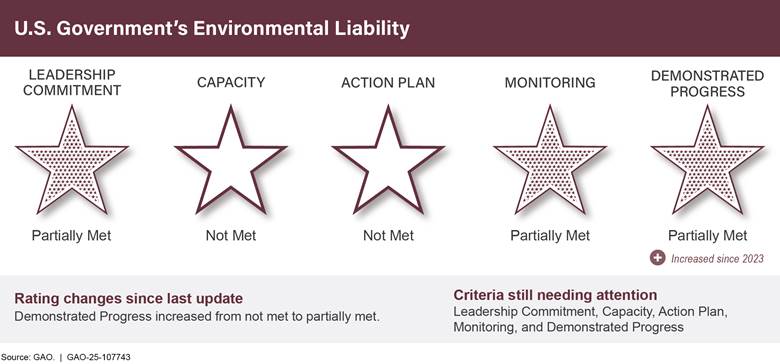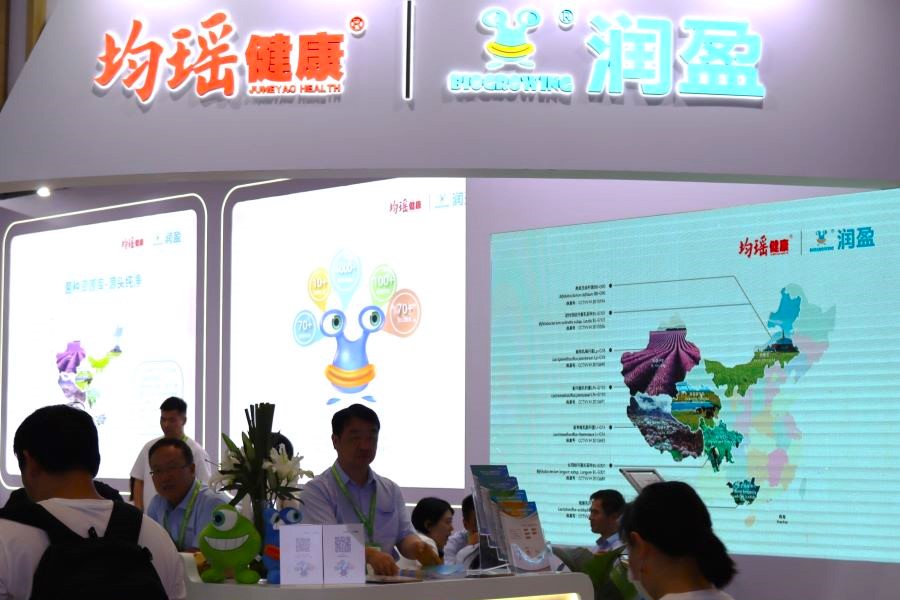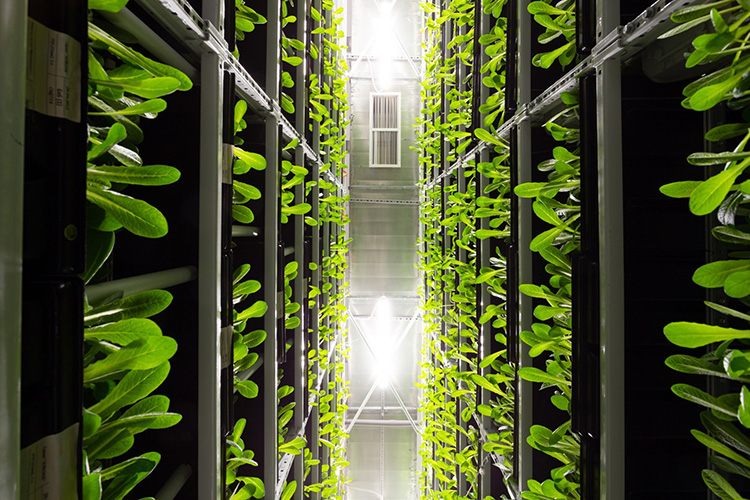Report on Kazakhstan’s Agricultural Sector Expansion and Alignment with Sustainable Development Goals
Executive Summary
This report details Kazakhstan’s strategic initiatives to expand its agricultural sector, with a particular focus on increasing exports to Serbia and the European Union. These efforts, discussed at the fourth Kazakh-Serbian Intergovernmental Commission (IGC) meeting, demonstrate a strong alignment with several United Nations Sustainable Development Goals (SDGs), including SDG 2 (Zero Hunger), SDG 8 (Decent Work and Economic Growth), SDG 9 (Industry, Innovation, and Infrastructure), SDG 12 (Responsible Consumption and Production), and SDG 17 (Partnerships for the Goals). The nation’s agricultural growth, driven by increased investment, productivity, and sustainable practices, positions it as a key contributor to regional and global food security.
Bilateral Cooperation and Partnership for the Goals (SDG 17)
The fourth meeting of the Kazakh-Serbian Intergovernmental Commission (IGC) underscored a mutual commitment to strengthening partnerships, a core principle of SDG 17. The discussions prioritized expanding bilateral cooperation across multiple sectors to foster sustainable development.
Key Areas for Cooperation
- Agriculture
- Healthcare
- Tourism
- Science and Biotechnology
- Education and Culture
Agricultural Trade and Investment
The partnership highlights significant progress in agricultural trade, directly contributing to economic growth (SDG 8) and food security (SDG 2).
- Trade Growth: In the first half of 2025, agricultural trade between Kazakhstan and Serbia increased 1.5 times, reaching a value of $4 million.
- Export Expansion Goals: Kazakhstan aims to increase its supply of key food products, including grains, legumes, vegetable oils, fish, meat, and dairy products.
- Joint Investment Projects: A proposal was made for joint investment projects focused on the processing of livestock and crop products, fostering industrial innovation (SDG 9).
National Agricultural Performance and Contribution to SDGs
Kazakhstan’s agricultural sector has demonstrated significant growth, reflecting successful policies aimed at achieving Zero Hunger (SDG 2) and promoting sustainable economic growth (SDG 8).
Production Growth and Economic Impact (SDG 2 & SDG 8)
- Food Production Value: National food production grew 1.4 times over three years, from $4.2 billion in 2021 to $6.1 billion in 2024.
- Gross Agricultural Output: In the first half of 2025, gross output reached $3.3 billion, a 3.7% increase year-over-year.
- Investment Growth: Investment in agricultural fixed assets rose 1.2 times to $1.7 billion, while investment in food production increased to $333 million.
- Labor Productivity: Productivity per employee increased from $6,300 in 2021 to $9,200, indicating progress in decent work and economic efficiency.
- Export Value: Total agricultural exports grew 1.3 times, from $3.8 billion to $5.1 billion.
Innovation and Sustainable Production (SDG 9 & SDG 12)
State support has catalyzed the adoption of innovative and sustainable practices, enhancing efficiency and environmental responsibility.
- Sustainable Farming: Land cultivated with water-saving technologies increased 1.82-fold to 470,100 hectares, promoting responsible production (SDG 12).
- Scientific Cooperation: Proposed collaboration in breeding, seed production, plant hybridization, and the production of biopesticides supports innovation (SDG 9).
- Modernization: The renewal rate of agricultural machinery increased from 4.3% to 5.5%, improving infrastructure and efficiency.
- Yield Improvement: The yield of grain and legumes rose from 11.0 to 15.2 cwt/ha, a direct contribution to food security (SDG 2).
Expanding Market Access and Resource Management (SDG 14 & SDG 15)
Kazakhstan is actively working to open new export markets, ensuring the sustainable management of its natural resources in line with global standards.
- Fisheries (SDG 14): The European Commission has approved 20 Kazakh enterprises for the export of pike perch fillets and other fish products to the EU, reflecting sustainable management of aquatic resources.
- Apiculture: Four major producers received authorization to export honey to the European Union.
- Livestock (SDG 15): The number of cattle grew by 10% to 4.3 million head, and small ruminants increased by 17.3% to 11.6 million head, supporting the sustainable use of terrestrial ecosystems.
- Future Access: Efforts are ongoing to secure EU market access for aquaculture products and horse meat.
Analysis of Sustainable Development Goals in the Article
1. Which SDGs are addressed or connected to the issues highlighted in the article?
- SDG 2: Zero Hunger – The article’s core focus is on increasing agricultural production, food exports, and improving food systems, which directly contributes to food security and sustainable agriculture.
- SDG 8: Decent Work and Economic Growth – The text highlights significant growth in agricultural output, investments, and labor productivity, all of which are key components of sustainable economic growth.
- SDG 9: Industry, Innovation, and Infrastructure – The article discusses investments in agricultural infrastructure, scientific cooperation, biotechnology, and modernizing machinery, which aligns with fostering innovation and upgrading industrial capabilities.
- SDG 12: Responsible Consumption and Production – The mention of water-saving technologies and the development of biopesticides points towards efforts to establish more sustainable production patterns in agriculture.
- SDG 17: Partnerships for the Goals – The entire context of the article, which is a meeting of the Kazakh-Serbian Intergovernmental Commission, along with discussions of trade with the EU and Russia, exemplifies the importance of global partnerships for achieving sustainable development.
2. What specific targets under those SDGs can be identified based on the article’s content?
-
SDG 2: Zero Hunger
- Target 2.3: By 2030, double the agricultural productivity and incomes of small-scale food producers. The article supports this by stating, “Labor productivity in the sector reached KZT 5 million ($9,200) per employee, up from KZT 3.4 million ($6,300) in 2021.”
- Target 2.4: By 2030, ensure sustainable food production systems and implement resilient agricultural practices. This is evidenced by the mention of a “1.82-fold increase in land cultivated with water-saving technologies to 470,100 hectares” and the initiative for “producing biopesticides.”
- Target 2.a: Increase investment in, inter alia, rural infrastructure, agricultural research and extension services, technology development. The article directly addresses this with data on increased investments: “Investments in fixed assets in agriculture increased 1.2 times to KZT 919 billion ($1.7 billion), while investments in food production rose from KZT 118.3 billion to KZT 180.3 billion.”
-
SDG 8: Decent Work and Economic Growth
- Target 8.2: Achieve higher levels of economic productivity through diversification, technological upgrading and innovation. The article highlights this by reporting a significant increase in labor productivity and an “increase in the renewal rate of agricultural machinery from 4.3% to 5.5%.”
-
SDG 9: Industry, Innovation, and Infrastructure
- Target 9.5: Enhance scientific research, upgrade the technological capabilities of industrial sectors in all countries. This is reflected in the identification of “Scientific cooperation” as a promising area, including “training specialists in breeding and seed production… plant hybridization, and producing biopesticides.”
-
SDG 12: Responsible Consumption and Production
- Target 12.2: By 2030, achieve the sustainable management and efficient use of natural resources. The implementation of “water-saving technologies” on 470,100 hectares is a direct measure supporting this target.
-
SDG 17: Partnerships for the Goals
- Target 17.11: Significantly increase the exports of developing countries. The article’s main theme is Kazakhstan’s plan to “expand agricultural exports to Serbia,” with data showing that “Exports of agricultural products grew 1.3 times, from $3.8 billion to $5.1 billion.”
3. Are there any indicators mentioned or implied in the article that can be used to measure progress towards the identified targets?
-
Indicators for SDG 2
- Indicator 2.3.1 (Volume of production per labour unit): The article provides precise figures: “Labor productivity in the sector reached KZT 5 million ($9,200) per employee, up from KZT 3.4 million ($6,300) in 2021.”
- Indicator 2.4.1 (Proportion of agricultural area under productive and sustainable agriculture): Progress is shown by the “1.82-fold increase in land cultivated with water-saving technologies to 470,100 hectares.”
- Indicator 2.a.1 (The agriculture orientation index for government expenditures): The article provides data on investment flows: “Investments in fixed assets in agriculture increased 1.2 times to KZT 919 billion ($1.7 billion).”
-
Indicators for SDG 8
- Indicator 8.1.1 (Annual growth rate of real GDP per capita): The article provides sectoral growth data that contributes to this indicator: “In the first half of 2025, gross agricultural output totaled KZT 1.8 trillion ($3.3 billion), 3.7% higher than the same period last year.”
- Indicator 8.2.1 (Annual growth rate of real GDP per employed person): This is directly measured by the increase in labor productivity mentioned in the article.
-
Indicators for SDG 9
- Indicator 9.5.1 (Research and development expenditure as a proportion of GDP): While not a direct monetary figure, the intent is shown through the plan for “Scientific cooperation… including training specialists in breeding and seed production… and producing biopesticides.”
-
Indicators for SDG 17
- Indicator 17.11.1 (Developing countries’ and least developed countries’ share of global exports): The article quantifies export growth: “Exports of agricultural products grew 1.3 times, from $3.8 billion to $5.1 billion.” It also details efforts to gain market access, such as the “European Commission has approved requirements for the export of Kazakh fish products to EU countries.”
4. Table of SDGs, Targets, and Indicators
| SDGs | Targets | Indicators from the Article |
|---|---|---|
| SDG 2: Zero Hunger | 2.3: Double agricultural productivity. 2.4: Ensure sustainable food production systems. 2.a: Increase investment in agricultural research and infrastructure. |
– Labor productivity increased from KZT 3.4 million to KZT 5 million per employee. – Land with water-saving technologies increased to 470,100 hectares. – Investment in agriculture fixed assets grew 1.2 times to KZT 919 billion. |
| SDG 8: Decent Work and Economic Growth | 8.2: Achieve higher levels of economic productivity through technological upgrading and innovation. | – Gross agricultural output grew by 3.7% in H1 2025. – Renewal rate of agricultural machinery increased from 4.3% to 5.5%. |
| SDG 9: Industry, Innovation, and Infrastructure | 9.5: Enhance scientific research and upgrade technological capabilities. | – Plans for scientific cooperation in breeding, seed production, and biopesticides. – Mention of biotechnology as a promising area of cooperation. |
| SDG 12: Responsible Consumption and Production | 12.2: Achieve sustainable management and efficient use of natural resources. | – Implementation of water-saving technologies on a growing area of land. – Initiative to produce biopesticides. |
| SDG 17: Partnerships for the Goals | 17.11: Significantly increase the exports of developing countries. | – Agricultural exports grew 1.3 times to $5.1 billion. – Intergovernmental commission meeting with Serbia to expand trade. – Gaining export approval for fish and honey to the EU. |
Source: timesca.com







